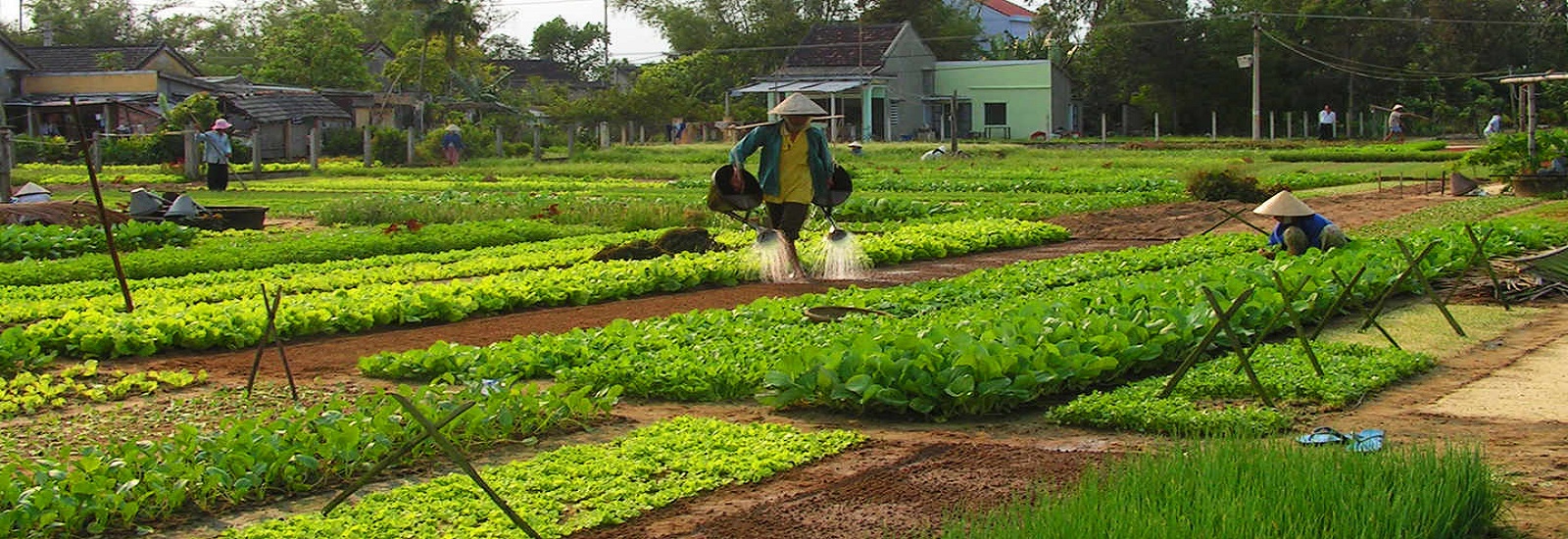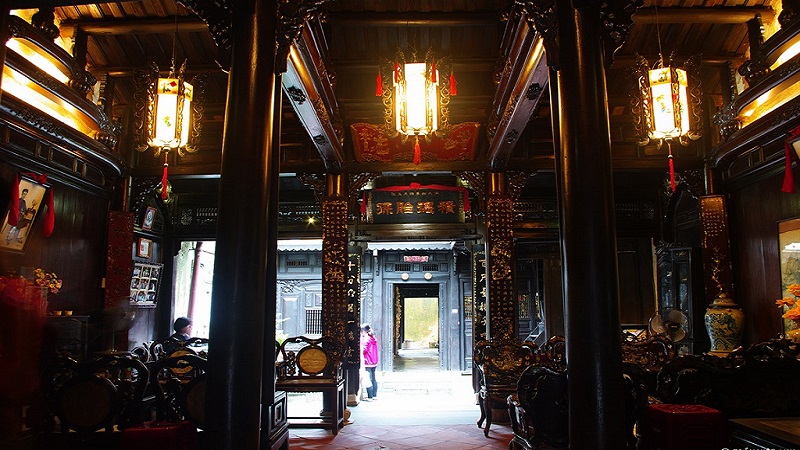- My Son Holy Land: My Son Sanctuary is located in Duy Phu commune, Duy Xuyen district, Quang Nam province, about 69 km from Da Nang city and near the ancient citadel of Tra Kieu, including many Cham temples in a valley about 2 km in diameter. Surrounded by hills. This was the place where the sacrificial worship of the Cham dynasty as well as the tombs of the Cham King or prince, national interest. My Son is considered one of the main centers of Hindu temples in Southeast Asia and is the only heritage of this genre in Vietnam.
It is often compared with other major temples in Southeast Asia such as Borobudur (Java, Indonesia), Pagan (Myanmar), Angkor Wat (Cambodia) and Ayutthaya (Thailand). My Son Sanctuary has been selected by UNESCO as one of the world heritage sites at the 23rd session of the World Heritage Committee as a good example cultural exchanges and standards as the only evidence of Asian civilization has disappeared. Currently, this place has been the Prime Minister of Vietnam put on the list of 23 national monuments of special importance.
- Hoi An Walking Tour: Hoi An Ancient Town is a UNESCO world heritage site, many of its ancient traditional wooden framed buildings have been meticulously preserved and retained gorgeous cultural design features. You can buy a ticket from the main tourist board that lets you into 6 of the maintained sites in the town for 120.00vnd. You by no means need to buy this ticket to witness the charm of Hoi An, there is just as much to experience without the ticket. Hoi An is the only town in Vietnam to have a ban on all motorized vehicles in the old quarter, while walking you can take a pleasant break from the beeping horns, pollution and dances with death you may face elsewhere.
- Hoi An Cycling Tours: Go and grab two wheels and spend the day pottering through the rice paddy fields, flower villages and meeting the locals. This is an excellent way to exprerience the real life of local people in Hoi An.
- Japanese Cover Bridge: The bridge was built by Japanese merchants in the 17th century, sometimes called the Japanese Bridge. According to legend, the temple is considered as a sword stabbing the back of the namazu monster, causing it not to tear the tail, causing earthquakes. In 1653, a pagoda was erected, connecting it to the north rail, protruding from the bridge, from which the local people called the Bridge.
In 1719, Lord Nguyen Phuc Chu visited Hoi An, named the bridge Lai Vien Kieu, meaning "welcome guests far away."
According to the date recorded at the roof and the remaining epitaph at the bridge, the bridge was rebuilt in 1817. The temple was probably reconstructed at this time.
The pagoda was restored in 1817, 1865, 1915, 1986 and gradually lost the Japanese architectural elements, instead of the Vietnamese-Chinese style architecture.
On February 17, 1990, Cau Pagoda was granted the National Historical-Cultural Relic.
Currently, the bridge is being eroded by the sewage channel stinking under the bridge and there is a risk of subsidence tilt.
- Phung Hung Ancient House: Address: 4 Nguyen Thi Minh Khai, Hoi An City, Quang Nam Province. With over 100 years of experience, the Phung Hung House has a unique structure with high wooden logs and broad corridors, reflecting the development of architecture and the interplay of Asian architectural styles. Hoi An in the past centuries.
Phung Hung ancient house was built more than 100 years ago in the development of Hoi An urban. The first owner of the house was a Vietnamese merchant who prospered and made extensive exchanges. He named the house Phung Hung means Hung Thinh with the desire to always prosper. In the past, this was a shop selling forest products such as cinnamon, pepper, salt, silk, porcelain, glass ... the current owner is the 8th generation descendants are still alive and preserved. old house. This is one of the most beautiful models of ancient architecture in Hoi An.
- Tan Ky Ancient House: Over 200 years, Tan Ky ancient house located on Nguyen Thai Hoc Street retains the intact structure and architecture as the first day of construction. This is an interesting stop on the journey to discover the ancient features of Hoi An.
Where the Le family lived for seven generations, the Tan Ky village was built in the late eighteenth century. The front of the house through Nguyen Thai Hoc street to open the trade, the back to the river, on Bach Dang street to facilitate the import of goods.
Wood is the main material used by the owner to build the house, besides the wood also rocks and tiles. Stone brought back from Thanh Hoa, it is the new stone that helps the wooden columns not after each time. Brick flooring is a type of Bat Trang brick, cool summer, warm winter.
The owner has invested a lot when designing a home that was neglected this time. Tan Ky ancient house is made by artisans who have the clever hands of the famous Kim Bong carpentry of Quang Nam. The motifs, patterns, structure on the house are all meaningful, colorful messages, the philosophy of the Orients.
- Phuoc Kien Assembly Hall: This is a place of worship, money and friendship meeting of Fujian people. Come to visit, visitors will admire the unique architecture magnificent, carved sophisticated. The hamlet has a "Tam" architecture in order: gate - yard - lake - bonsai - two blocks east and west - main - backyard - and post - electricity.
The main shrine Thien Mau, Avalokitesvara Bodhisattva, God Spirit, three pregnant women and 12 women midwife. There are also many bronze statues, bronze drums, bronze bells, large incense burner, 14 lanterns and other valuable objects.
Legend has it that the forerunner of the Assembly Hall is a small shrine worshiping Thien Hau Thanh Mau statue (the goddess blessing the merchant surpassed the ocean wind) picked up on the coast of Hoi An in 1697.
Through many restoration, with the main contribution of the Fujian State, the Assembly became more brilliant, spacious contributing to the beauty of Hoi An ancient architecture. Through the way of worshiping the figures: 6 money (gentle), midwife, goddess ... Assembly shop deeply reflects the philosophy of East Asia on human happiness.
- Cantonese Chinese Assambly Hall: This was built in 1885, initially to worship Thien Hau Thanh Mau and Confucius, after 1911 moved to Quan Cong and Tien Hien.
The art of harmonizing wood materials, stone in force structure and decorative motifs bring the beauty of the pedestal, pedestal. At present, the shop still holds many old artifacts such as: 4 large horizontal scrolls, 1 large copper boulder, 1.6m high, 0.6m wide, 1 pair of Chinese celadon pearls. Nguyen Luy (15/1 lunar calendar) and Quan Cong (24/6 lunar calendar), the festival held a very rich festival, attracting many participants.
- Trieu Chau Assambly Hall: also called the Bon Bon Pagoda, is located at 157 Nguyen Duy Hieu street. The Trieu Chau Chamber of Commerce was built in 1845 by the Chaozhou State Government as a community and belief center of the Teochiu people in Hoi An.
The congregation worshiped the gods to overcome the wind, through which may wish to travel on the sea are sailing, wind. The hamlet is an architectural masterpiece with exquisite wood carvings, patterned wood decorations and folk legends and beautiful terracotta reliefs.
- Tailored Made Shop: If you don’t want to take your chances with the tailors and feel overwhelmed trying to find something culturally fashionable in Hanoi or Ho Chi Minh City, Hoi An has recently become a mecca for artistic Asia inspired mid market fashion labels. Do not waste your chance while being in Hoi An.
- Beach Basking: Hoi An is also very famous for beautidul sandy beach. Just 20 minute cycle from Hoi An center and going through the countryside and over rivers to Anh Banh Beach or a bit busy road to Cua Dai Beach.
During the day the soft sandy beach has plenty of sun lounges, beach bars and turquoise sea to swim in. Evenings hold a laid back bohemian vibe with live music, BBQs and bonfires over the weekend.











Comments
Post a Comment